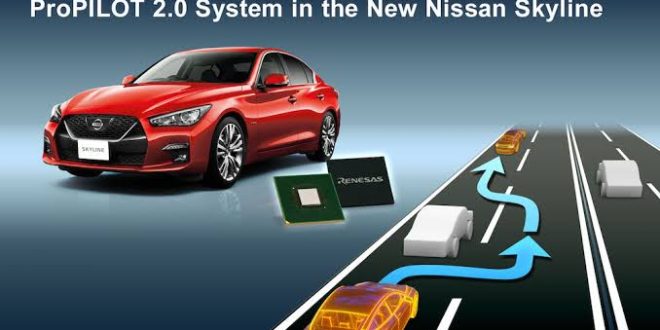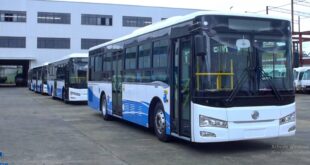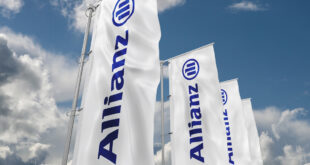Driver monitoring system (DMS) revenue from embedded units installed in private vehicles is on track to outgrow aftermarket DMS revenues in the commercial vehicles vertical in 2024 and reach US$1.8 billion by 2030.
The revenue boost will be led by the Euro NCAP standards and the
European Commission (EC) regulation that mandates the technology from 2022, as well as the U.S. National Transportation Safety Board (NTSB) notice recommending the use of DMS in semi-autonomous cars. By 2022, 19 million DMS shipments will generate US$502 million in revenues, according to global tech market advisory firm, ABI RESEARCH.
More than 1.25 million people are killed annually in road accidents; 95 per cent of the cases are caused by human error. DMS regulatory mandates are in place to substantially reduce driver errors caused by distraction and
drowsiness .
“Despite the upcoming regulation, apart from GM, no other OEM has yet announced significant DMS mass-deployment,” Maite
Bezerra, Smart Mobility Analyst with ABI Research, said .
With the looming deadline, DMS software suppliers with higher experience within the
commercial vehicle aftermarket, such as Seeing Machines, Eyesight,
SmartDrive and FotoNation (a subsidiary of Xperi), will be best
positioned to help OEMs to meet the European Commission basic
requirements at minimal costs.
“Thus, DMS providers must map a
short-term strategy to meet the expected ascending demand and develop low-cost NCAP and EC tailored solutions for mass-market OEMs.”
When it comes to passenger vehicles, only Cadillac CT6 (powered by Seeing Machines), Audi A8, Subaru Forester, Nissan Skyline, and a few BMW models currently offer the technology. Considering upcoming regulation and OEM announcements, ABI Research predicts that shipments
of DMS will increase from 0.05 million in 2019 to 18.9 million in 2022, and reach 82.9 million in 2030.
Europe is anticipated to have the
highest DMS revenue opportunity until 2026, reaching almost US$10
million in 2020 and US$487 million in 2022. Asia-Pacific has the
second-highest revenue opportunity in 2020, U$$2 million, and it is predicted to become the most profitable market from 2027, reaching close to US$100 million in 2030.
The use of aftermarket DMS in commercial vehicles, especially truck fleets, is relatively well established.
Demand has been driven by a desire to reduce the costs associated with driver-error accidents and consequent cargo loss and scheduled downtime.
ABI Research anticipates global shipments of aftermarket DMS within this vertical to reach 2.2 million units in 2020. Asia-Pacific alone will be responsible for 75 per cent of these shipments in 2020, reaching 1.6 million sales.
“The substantial demand in the region is motivated by the
belief that Chinese and Japanese authorities will enforce the wider use of DMS in commercial trucks following recent accidents caused by driver distraction,” Bezerra explained.
Meanwhile, the European market will experience substantial revenue growth of nearly 6,000 per cent between 2019 and 2022, also due to legislation that will make DMS a standard feature in new trucks, vans, and buses from 2022.
“Because DMS safety features will become standard within the next
years in Europe, Japan, and the United States, non-safety features will be the crucial difference between car models, and possibly, the primary source of DMS income to OEMs.
Therefore, OEMs must offer safety and convenience capabilities within the same system, said Bezerra.” For example, by tracking the driver’s gaze, the DMS system can initiate the rear windshield wiper when the driver checks the mirror, and highlight or tone down information on infotainment system.
“Additionally, facial recognition can be used to automatically set up the driver’s preferred temperature, side mirror positions, and seat inclination, or infotainment preferences such as volume level, favorite content, playlist, areas of interest, and even directed marketing.
“The DMS suppliers with experience in sensor fusion which can develop DMS software with basic up-or down-gradable universal features will be best placed to help OEMs looking for differentiation.”
These findings are from ABI Research’s Camera-Based Driver and Occupant Monitoring Systems application analysis report. This report is part of the company’s Smart Mobility and Automotive research service, which includes research, data, and ABI Insights.
Based on extensive primary interviews, Application Analysis reports present in-depth analysis on key market trends and factors for a specific application, which could focus on an individual market or geography.
 ..:: AUTO REPORT AFRICA ::..
..:: AUTO REPORT AFRICA ::..




